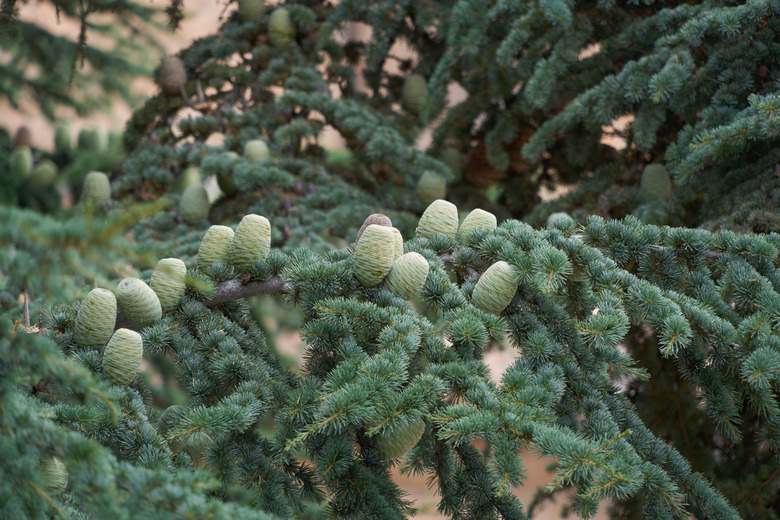How To Top Cedar Trees Properly
We may receive a commission on purchases made from links.
True cedars are tall, magnificent trees and a delight to own if your property is expansive, but attempting to squeeze a cedar into a compact space is a losing proposition. Hacking away at the top of the tree will cause irreparable damage to the cedar and probably kill it. It's important to get an overview of the growth patterns of these trees before attempting any pruning.
Identify True Cedars
Identify True Cedars
True cedar trees are aromatic, but not all aromatic trees are true cedar. In fact, many trees that smell like cedars and are given a common name with the term "cedar" in it are not true cedars at all. For example, a variety of juniper trees fit into this "false cedar" category.
True cedars are not native to the United States; they come from the Middle and Far East, growing along the southern and eastern Mediterranean and east to the Himalayas. You can identify them by the dense clusters of evergreen needles that grow on stout pegs. If your tree has scalelike foliage instead, it is likely a juniper that falls in the category of false cedar. Another identifying characteristic of true cedars is their cones. They are large and shaped like barrels, standing erect above the branches.
Understand Cedar Growth Patterns
Understand Cedar Growth Patterns
The three recognized types of true cedars are the Deodar cedar (Cedrus deodora), the Atlas cedar (Cedrus atlantica), and the cedar of Lebanon (Cedrus libani). They are tall, elegant trees growing between 70 and 100 feet high. Generally, their branches grow horizontally to create broad, upright trees that shade out growth beneath. Dwarf cultivars are available in commerce.
When pruning evergreens, it is important to cut back to dormant buds so that the foliage can grow back after trimming. True cedars have few if any dormant buds on the older parts of the trunk or limbs. That means that pruning must be limited if you don't want to disfigure the tree. Trimming off all of the living needles on a branch will kill it, leaving a permanent hole in the tree's structure. For that reason, experts recommend that true cedars remain unpruned unless absolutely necessary.
Prune Lightly Branch by Branch
Prune Lightly Branch by Branch
If it is absolutely necessary to prune true cedar, you should tackle it branch by branch, keeping in mind that there is a dead zone under the outer green area. If you prune into that area, the needles won't grow back, and the branch may die.
So, prune with care, working on one branch at a time with a clean, sharp cutting tool. Trim off branch tips on a branch, taking care to make every cut just above a lateral bud. Work your way around the tree until every branch has been snipped.
If your true cedar looks like it is destined to outgrow its space in your backyard, consider transplanting it if it is young. If it is not possible to move it, it is better to remove the tree entirely than to cut off the top of the tree. "Topping" a true cedar will maim the tree and may kill it. Replace the cedar with a cultivar that is the proper size for your site.
